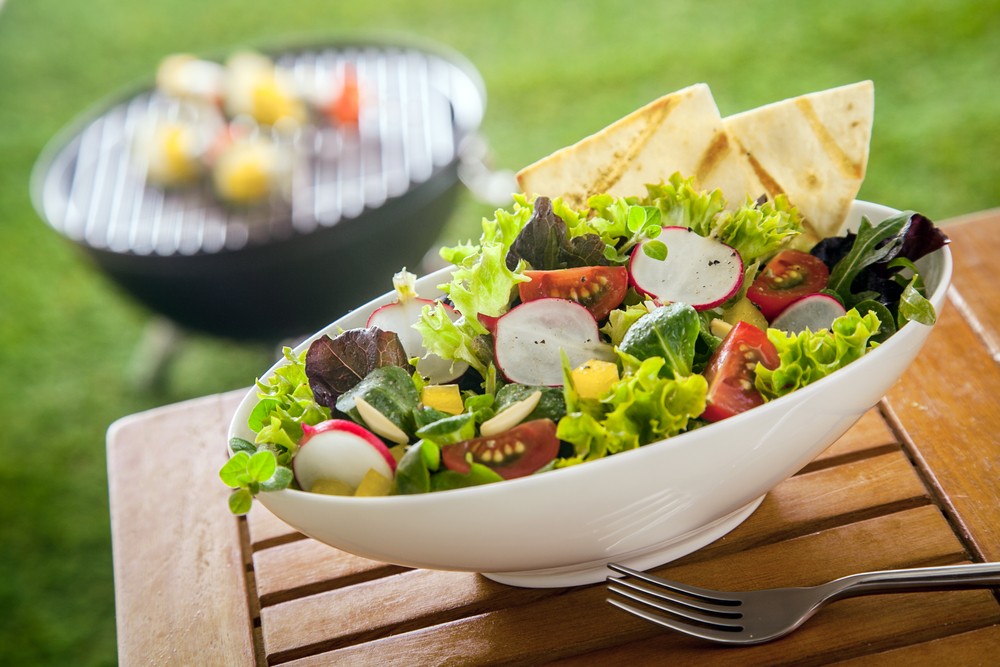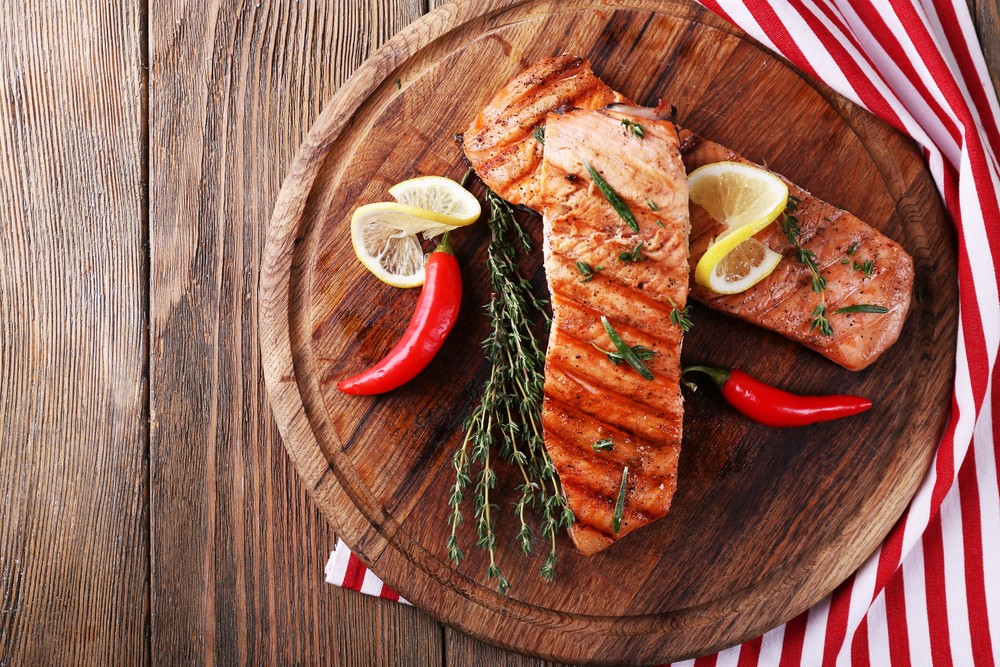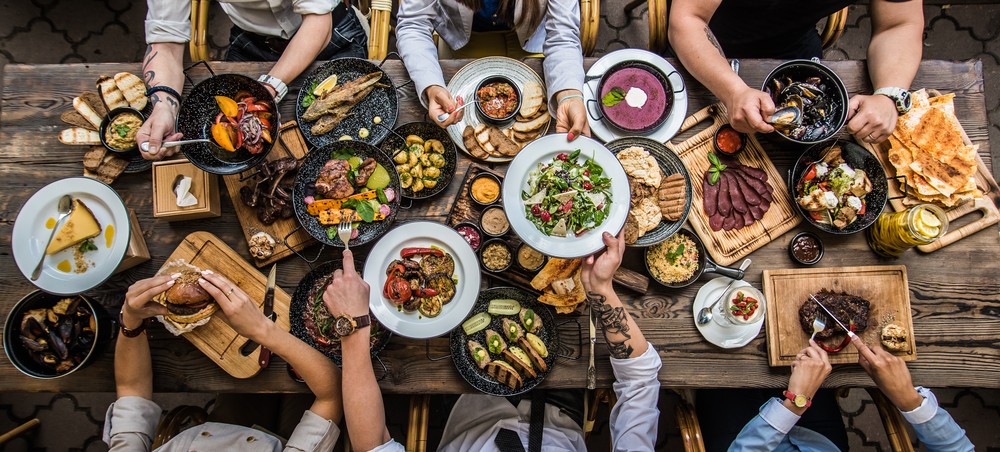How to Eat Properly This Labor Day
Our CDE gives important dietary advice to keep in mind this Labor Day and how to eat properly when living with diabetes.

By Susan B. Sloane, BS, RPh, CDE
Labor Day is always a fun time of year: the long weekend allows us to spend time with friends and family while enjoying the last weekend of summer. Inevitably, Labor Day involves some kind of BBQ, picnic, or family meal. If you are living with diabetes, you know that organized meals can be stressful; it may be difficult or nearly impossible to find food that won’t send your blood glucose level soaring.
In the following post, I’ll go over what I think is a healthy diet and some advice that I have for eating well during this Labor Day holiday. I will also include some recommendations from my personal life.
Nowadays, there are so many diets out there that it may be confusing where to start or which one to choose. No matter which diet you choose, the most important thing to remember is to choose a healthy diet that is good for your overall well-being. The term “Diabetic Diet” gets thrown around a lot, but it’s misleading because it’s important to maintain healthy eating habits regardless of whether you are affected by diabetes or not.
In simple terms, a healthy diet should consist of very few white flour foods. I tell patients to avoid white rice, white bread, white potatoes, and of course, cakes and pastries. This may prove especially difficult on Labor Day given the fact that BBQs often include hot dogs, hamburgers, and simple side dishes – all of which contain lots of white flour foods.
Some people may question, “What is left?”, and I would answer quite a lot.
First of all, I would say you should make an effort to cook with and eat fresh fruits and vegetables wherever possible. Fresh fruits contain tons of fiber and are a key source of nutrients for a healthy diet.

If you aren’t sure about what there will be to eat at your Labor Day celebration, you should bring fruits and vegetables that are in season with you; apples are my pick for one of the healthiest fruits out there with a good amount of fiber.
It’s also interesting to note that cooking certain foods and vegetables make them more likely to raise blood sugars more quickly than eating the raw version of the vegetable.
This phenomenon can be further explained if you look at a list of foods and their glycemic index. The glycemic index, in simple terms, is how much certain foods can raise your blood sugars based on the quality of the food and, of course, the quantity consumed.[1]
Keep this in mind during your Labor Day BBQ. If you have a chance to eat certain vegetables before they are cooked or before they are thrown on the grill, it may make more sense for you to eat them raw instead of eating the cooked version.
It’s important to note that it is much more nutritious to eat an entire piece of fruit rather than drinkings fruit juice. That’s because fresh fruit contains nutrients often lost in making juice, and more importantly, fresh fruit contains fiber.
There is another caveat to drinking juice: certain juices, such as grapefruit juice, may cause adverse reactions. Grapefruit juice alone has a known drug interaction with over 80 different medications.[2]
One such group of medications that may interact with grapefruit juice is statins, commonly used to lower cholesterol. Eating a grapefruit instead of drinking the juice may blunt this interaction, but caution is advised. Consult with your pharmacist for more information on potential interactions between juice and your prescription medications.
If you have a choice of different meats this Labor Day, focus on lean meats like poultry and fish. Lean meats are a great source of protein and they’re what I choose most often for me and my family. You have tons of options when eating lean meat: chicken, salmon, and turkey burgers are just a few options you have to choose from this labor day.

I would avoid eating red meat if possible; this means staying away from hot dogs, hamburgers, and steaks. I try to only eat red meat once a week or so, as red meat can increase cholesterol if eaten too often.
Salads are healthy, fun to make, and are a great way to take advantage of the fruits and vegetables that are in season this time of year. I like to add fresh blueberries and nuts to our family’s salads.
Any time you add fiber such as nuts or whole grains to food, you slow down the rate of absorption of your meal, creating less of a burden on your metabolism, specifically the insulin producing cells of the pancreas. Similarly, it has been found that fiber can have a positive effect on energy in the body and actually help with weight loss.[3]
Speaking of weight loss, after a big meal like those we generally have on Labor Day, people often begin to talk about starting a diet after the holiday. There are many ways to alter your diet to lose weight, including using established diet plans and working with a dietitian to create an individualized diet plan based on your age, weight, and other medical conditions.
Any new diet plan should be undertaken with the supervision of your own health care team. It is also important to remember that if you want to keep weight off, it should come off slowly, not all at once. You don’t gain it overnight, so you can’t expect to lose weight in a matter of days. A healthy weight loss program will have you lose on average of two to three pounds per month, depending on your target weight loss and original starting weight.[4]

I mentioned earlier that weight loss programs can be tailored based on medical conditions. For example, a large portion of patients with diabetes has high blood pressure. This subset of patients would benefit from a low sodium diet, otherwise known as the DASH Diet.
DASH stands for The Dietary Approaches to Stop Hypertension and has been named the best overall diet by U.S. News & World Report for the sixth year in a row. Depending on individual health needs, the DASH Diet limits sodium intake to between 1500-2300 mg per day. To give you an idea of what that looks like, 2300 mg of sodium is equal to about one teaspoon of salt.
As a side note, I get a lot of questions on artificial and non-nutritive sweeteners. These may be used in Labor Day desserts, or even to sweeten coffee and tea. I think these are fine when used in moderation. Yet, it’s important to keep in mind that some studies have implicated these sweeteners in increasing fat tissue in certain individuals when used too often. Everything in moderation my friends!
Last, but not least, use the resources at your disposal to find tasty, diet-friendly recipes that you can try this Labor Day. Just keep in mind that individual tastes vary, and you can always feel free to spice things up with red pepper or hot sauce. Spices and herbs add flavor without adding additional calories.
There you have it, some quick tips and tricks to maintaining a healthy diet this Labor Day. I follow these guidelines year-round to make sure that the food I am consuming is of high quality and nutritional value. Food is an essential part of our lives, and if we choose wisely we can stay on track for healthy living!
And if you are looking for a more efficient way to manage your diabetes, you can get check out the 5 essential tools that Dario offers in an all-in-one device.
About Susan Sloane
Susan B. Sloane, BS, RPh, CDE, has been a registered pharmacist for more than 29 years and a Certified Diabetes Educator for most of her career. Her two sons were diagnosed with diabetes, and since then, she has been dedicated to promoting wellness and optimal outcomes as a patient advocate, information expert, educator, and corporate partner.
Susan has published numerous articles on the topic of diabetes for patients and health care professionals. She has committed her career goals to helping patients with diabetes stay well through education.
<b>Medical Disclaimer</b>
The articles provided on this website are for informational purposes only. In addition, it is written for a generic audience and not a specific case; therefore, this information should not be used for diagnostic or medical treatment. This site does not attempt to replace the patient-physician relationship and fully recommends the reader to seek out the best care from his/her physician and/or diabetes educator.
[1] The University of Sydney. (2017, May 2). Glycemic Index. Available at http://www.glycemicindex.com/ [2] American Pharmacists Association. Juice interactions: What patients need to know. Available at https://www.pharmacist.com/juice-interactions-what-patients-need-know. Accessed on Feb 4th, 2017. [3] Roberts SB, Karl JP, Meydani M, et al. Substituting whole grains for refined grains in 6-week randomized trial favorably affects energy balance parameters in healthy men and post-menopausal women [published online February 8, 2017]. Am J Clin Nutr. doi:10.3945/ajcn.116.139683. [4] Centers for Disease Control and Prevention. (2015, May 15). Losing Weight: What is Healthy Weight Loss? Available at https://www.cdc.gov/healthyweight/losing_weight/
DAR -0097 RevA 06/2019







